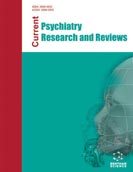Abstract
Background: Diosmin has already been described and documented to be neuroprotective, antioxidant and anti-inflammatory. It may possess or hold depressionalleviating activity. Therefore, the purpose of the current research protocol is to investigate the depression-relieving proficiency of diosmin in stressed and unstressed mice.
Methods: Male mice (Swiss albino) were imperiled to an unpredictable chronic stress paradigm every day for three sequential weeks, and depression-resembling behavioral despair was induced. Imipramine 15 mg/kg and diosmin (25, 50 and 100 mg/kg) were dispensed for 21 successive days to discrete groups of stressed and unstressed mice.
Results: Both diosmin (100 mg/kg) and 15 mg/kg imipramine administration for 3 consecutive weeks substantially or significantly diminished the immobility period of mice imperiled to stress in comparison to stressed mice gauzed with the vehicle. Diosmin (25, 50 and 100 mg/kg) and imipramine considerably reinstated the diminished sucrose proclivity (sucrose preference percentage; %) in stressed mice, demonstrating their considerable or substantial depression-relieving effects. The locomotor activities of mice were not considerably altered by these drugs. Antidepressant-like activity of diosmin for immobility periods and preference for sucrose was observed to be analogous to imipramine. Diosmin (100 mg/kg) and imipramine substantially quashed CUMS- persuaded escalation of plasma corticosterone and nitrite levels, malondialdehyde levels and MAO-A activity in the brain of stressed mice. Both drugs also substantially reversed CUMS-prompted reduction in catalase activity and brain glutathione levels.
Conclusion: Accordingly, diosmin revealed significant anti-depressive activity in mice imperiled to chronic mild unpredictable stress paradigm conceivably via mitigation of nitrosative and oxidative stress, reticence of brain MAO-A action, and sink drop of plasma corticosterone degrees.
Graphical Abstract
[http://dx.doi.org/10.1017/S0033291700035765]
[http://dx.doi.org/10.1038/87865] [PMID: 11329053]
[http://dx.doi.org/10.1016/j.neubiorev.2011.12.005] [PMID: 22197082]
[http://dx.doi.org/10.1002/(SICI)1520-6394(1998)8:2<71:AID-DA5>3.0.CO;2-N] [PMID: 9784981]
[http://dx.doi.org/10.1097/00004850-199905001-00003] [PMID: 10468323]
[http://dx.doi.org/10.1046/j.1471-4159.2001.00108.x] [PMID: 11208916]
[http://dx.doi.org/10.1016/S0165-0327(99)00121-4] [PMID: 10802134]
[PMID: 21552194]
[http://dx.doi.org/10.2174/187152508783955060] [PMID: 18473779]
[http://dx.doi.org/10.1016/j.pharep.2015.03.001]
[http://dx.doi.org/10.1038/sj.npp.1300418] [PMID: 15010697]
[http://dx.doi.org/10.1016/j.brainresrev.2007.06.007] [PMID: 17692926]
[http://dx.doi.org/10.1046/j.1525-1497.1999.03478.x] [PMID: 10491249]
[http://dx.doi.org/10.1016/j.ejphar.2004.07.038] [PMID: 15464046]
[http://dx.doi.org/10.2147/PPA.S29716] [PMID: 22654508]
[PMID: 10454515]
[http://dx.doi.org/10.1089/109662003772519976] [PMID: 14977450]
[http://dx.doi.org/10.5607/en.2010.19.1.30] [PMID: 22110339]
[http://dx.doi.org/10.1080/19768354.2010.528192]
[http://dx.doi.org/10.1111/j.1472-8206.2012.01040.x] [PMID: 22458864]
[http://dx.doi.org/10.1016/j.pharep.2013.06.001] [PMID: 24905299]
[http://dx.doi.org/10.1016/j.jff.2014.01.015]
[http://dx.doi.org/10.3390/molecules191221442] [PMID: 25532842]
[PMID: 26468466]
[http://dx.doi.org/10.1016/j.bbr.2015.09.031] [PMID: 26416673]
[http://dx.doi.org/10.1016/j.bbr.2015.12.030] [PMID: 26721468]
[http://dx.doi.org/10.25004/IJPSDR.2021.130608]
[http://dx.doi.org/10.1016/j.tiv.2011.04.003] [PMID: 21477647]
[http://dx.doi.org/10.1021/jf040078p] [PMID: 15291464]
[http://dx.doi.org/10.1016/j.ejphar.2014.04.026] [PMID: 24769512]
[http://dx.doi.org/10.1016/j.neuroscience.2014.03.032] [PMID: 24680937]
[http://dx.doi.org/10.1016/j.ejphar.2013.08.031] [PMID: 24036254]
[http://dx.doi.org/10.1016/j.ejphar.2011.12.040] [PMID: 22266490]
[http://dx.doi.org/10.1016/j.toxlet.2013.04.004] [PMID: 23665045]
[http://dx.doi.org/10.1007/s12264-010-0609-9] [PMID: 20332819]
[http://dx.doi.org/10.1016/j.biopha.2010.02.001] [PMID: 20362409]
[http://dx.doi.org/10.1016/j.pnpbp.2009.07.002] [PMID: 19596036]
[http://dx.doi.org/10.1007/s00213-010-2094-2] [PMID: 21103863]
[http://dx.doi.org/10.1007/BF00428203] [PMID: 3923523]
[http://dx.doi.org/10.1007/BF00187257] [PMID: 3124165]
[http://dx.doi.org/10.1016/0003-2697(82)90118-X] [PMID: 7181105]
[http://dx.doi.org/10.1016/0006-2952(76)90369-5] [PMID: 938542]
[http://dx.doi.org/10.1016/0005-2760(65)90118-9] [PMID: 14325327]
[http://dx.doi.org/10.1016/0003-9861(59)90090-6] [PMID: 13650640]
[http://dx.doi.org/10.5567/pharmacologia.2016.16.21]
[http://dx.doi.org/10.1016/S0076-6879(84)05016-3] [PMID: 6727660]
[http://dx.doi.org/10.1016/0165-6147(91)90529-2] [PMID: 2063478]
[http://dx.doi.org/10.1007/s002130050456] [PMID: 9452163]
[http://dx.doi.org/10.1016/j.tins.2008.06.006] [PMID: 18675469]
[http://dx.doi.org/10.1126/science.6334362] [PMID: 6334362]
[http://dx.doi.org/10.1358/dnp.2006.19.10.1068007] [PMID: 17299602]
[http://dx.doi.org/10.1248/bpb.29.2399] [PMID: 17142971]
[http://dx.doi.org/10.1016/j.bbr.2012.10.015] [PMID: 23085478]
[http://dx.doi.org/10.1016/j.pnpbp.2010.05.004] [PMID: 20471444]
[PMID: 25141543]
[http://dx.doi.org/10.1016/S0165-0327(00)00199-3] [PMID: 11292519]
[http://dx.doi.org/10.4161/oxim.3.5.13109] [PMID: 21150338]
[http://dx.doi.org/10.18311/ti/2022/v29i3/29153]
[http://dx.doi.org/10.1016/j.biopha.2018.09.127] [PMID: 30372840]
[http://dx.doi.org/10.1016/j.biopha.2017.07.014] [PMID: 28738538]
[http://dx.doi.org/10.1038/sj.npp.1300097] [PMID: 12637949]
[http://dx.doi.org/10.1016/j.neubiorev.2018.12.002] [PMID: 30529362]
[http://dx.doi.org/10.1177/0960327119889655] [PMID: 31797688]
[http://dx.doi.org/10.3390/molecules27238232] [PMID: 36500323]
[http://dx.doi.org/10.1155/2022/8584558] [PMID: 35300069]
[http://dx.doi.org/10.1515/dmpt-2020-0119] [PMID: 34704698]
[http://dx.doi.org/10.1002/ijgo.13100] [PMID: 31925779]
[http://dx.doi.org/10.1007/s11356-017-0232-7] [PMID: 28988357]











